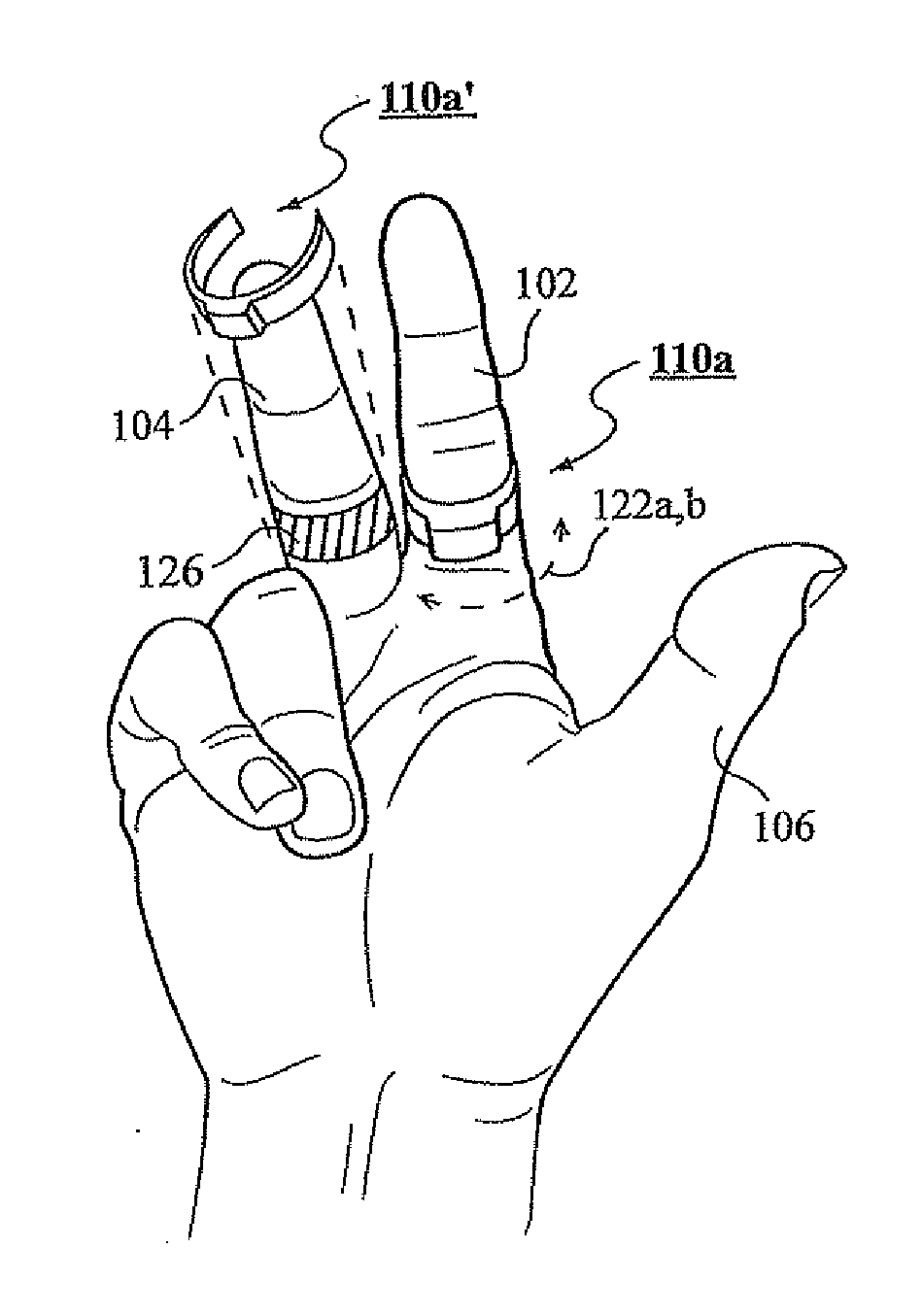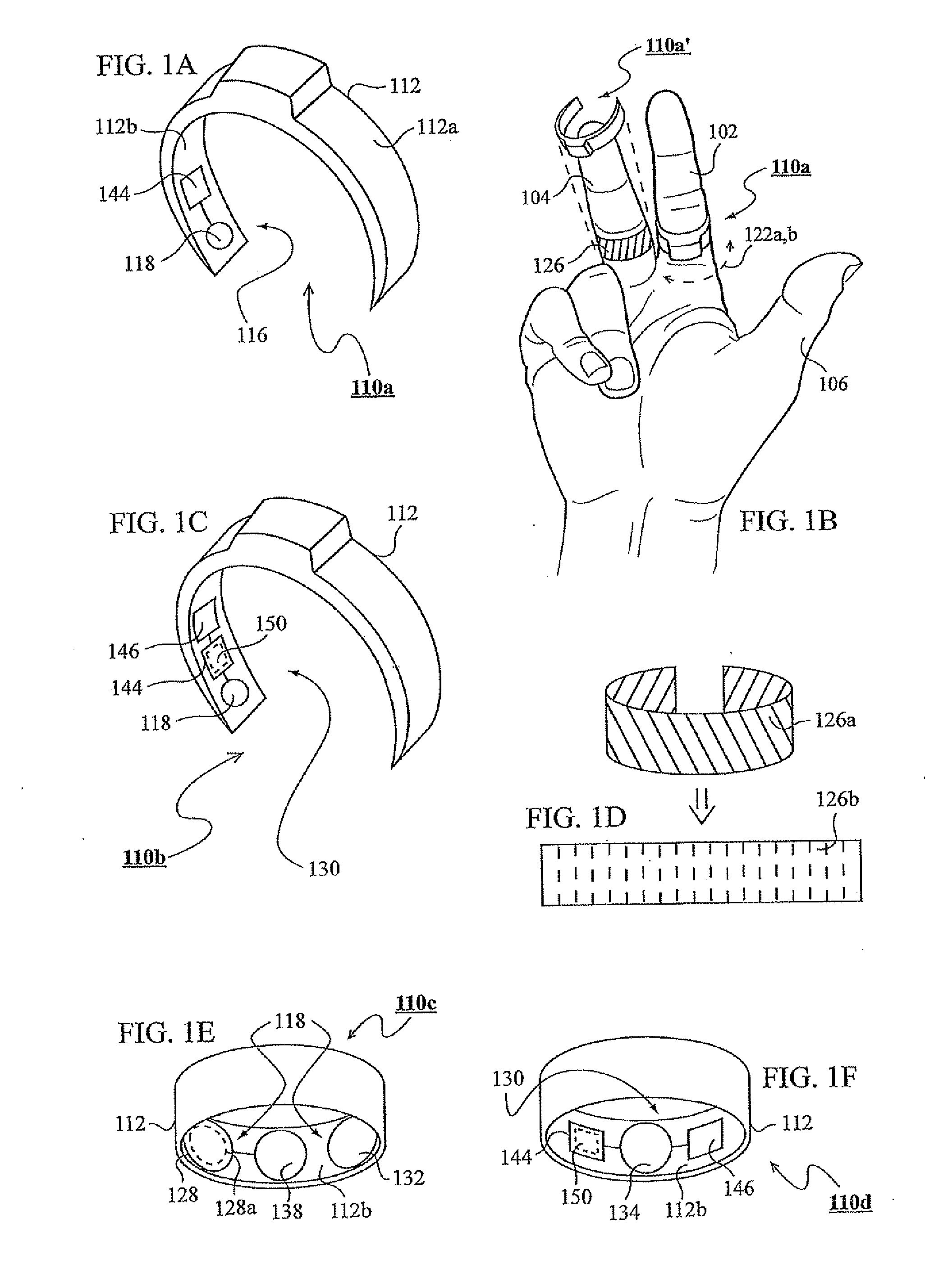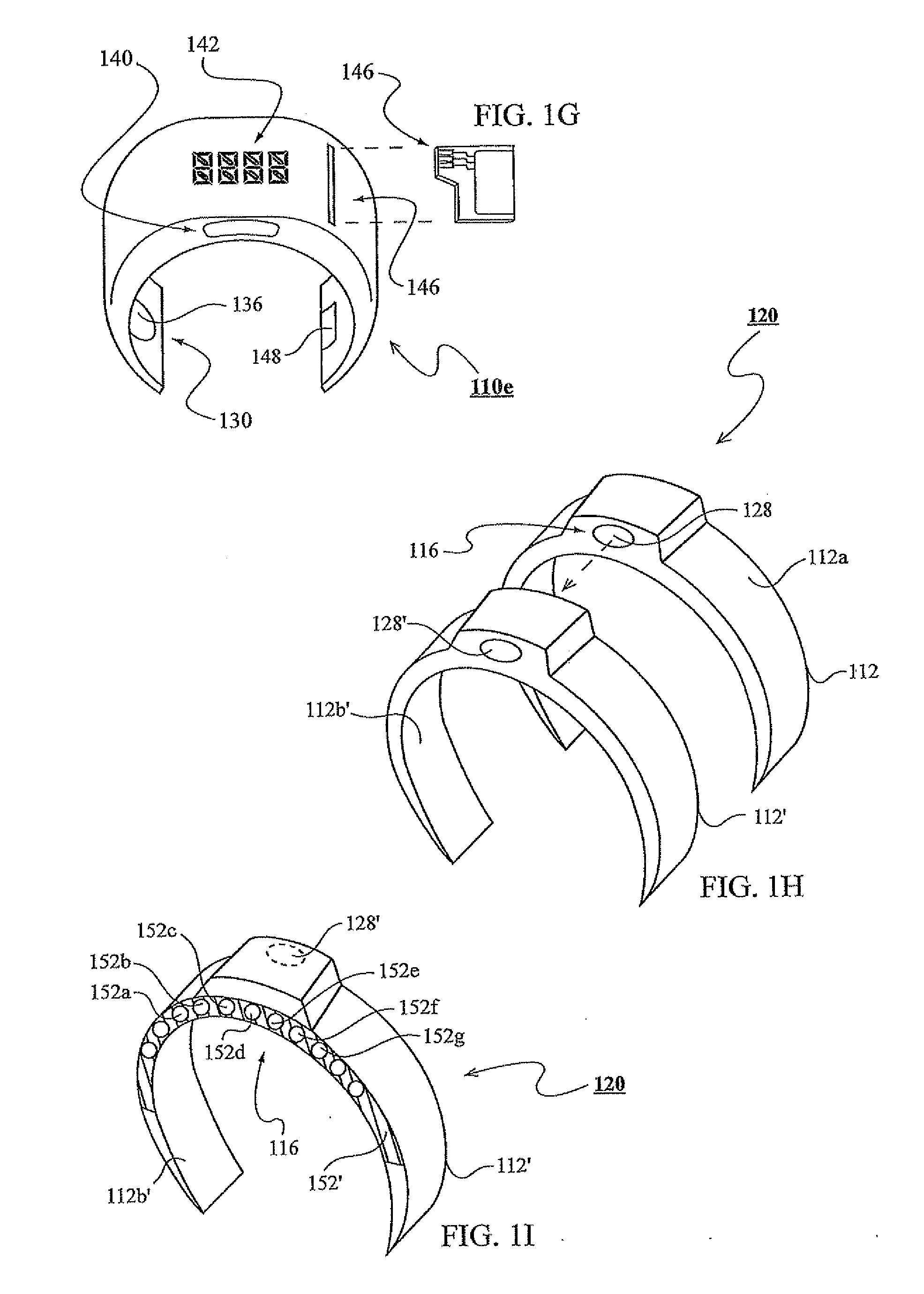Finger-worn devices and related methods of use
- Summary
- Abstract
- Description
- Claims
- Application Information
AI Technical Summary
Benefits of technology
Problems solved by technology
Method used
Image
Examples
first embodiment
[0160]FIG. 1A shows a finger-worn device of the invention as a device 110a. Device 110a includes a rotatable section 112 which can be worn on and rotated around a finger. Device 110a further includes an indication mechanism 116 for indicating rotation (or “relative motion”) of section 112 around the finger. Section 112 is shown in FIG. 1A as a partial ring, however, it should be clear that this particular embodiment is by no means limiting, and that in some embodiments, section 112 is a full ring. In FIG. 1A, indication mechanism 116 includes a sensing mechanism 118. Sensing mechanism 118 may utilize any number of sensors generally directed to or facing the finger, such as being generally located at an internal side 112b of section 112. As section 112 rotates, mechanism 118 senses a different part on the curve of the finger (e.g. a sensor of mechanism 118 is facing a different part of the finger, specifically on the curve of the finger around which section 112 rotates). Accordingly,...
second embodiment
[0161]FIG. 1B shows device 110a exemplarily worn on an index finger 102. Rotation directions 122a,b are shown as directions in which device 110a can be rotated, such as by a thumb 106. FIG. 1B further shows a finger-worn device of the invention as a device 110a′ ready to be worn on a middle finger 104, specifically on a curve 126 of finger 104. Curve 126 is generally the curved surface of the finger at the circumference of the finger. When device 110a′ is worn on curve 126, the curve overlaps inner side 112b of section 112, from which sensing of the finger is performed. Accordingly, sensing is specifically of curve 126. The curve, as referred to herein, may include the entire circumference of the finger (full circle around the finger) or only a certain part of the circumference, such as only the curve of the front of the finger (shown in FIG. 1B). As section 112 rotates, a different part along curve 126 is sensed at any given time (such as by a sensor of mechanism 118 facing a diffe...
third embodiment
[0166]FIG. 1E shows a finger-worn device of the invention as a device 110c, similar to the previously described devices, in which a rotatable section 112 shown to have a shape of a full ring. A sensing mechanism 118 includes an optical sensing mechanism 128 (e.g. a photodiode). During rotation of section 112, indications of rotation may be obtained by sensed optical changes as sensed by mechanism 128 sensing the finger (see e.g. U.S. Pat. No. 6,259,108). Mechanism 118 may utilize a light source 132 (e.g. a light-emitting diode (LED)) to facilitate optical sensing of mechanism 128. In some embodiments, sensing mechanism 128 may utilize a passive infrared (PIR) sensor 128a for sensing the natural physiological radiation of infrared (IR) light from the finger, in which case light source 132 is not needed. In some embodiments, by utilizing a PIR sensor, mechanism 128 and accordingly mechanism 118, act as a passive indication mechanism (e.g. a passive indication mechanism 116a) where a p...
PUM
 Login to View More
Login to View More Abstract
Description
Claims
Application Information
 Login to View More
Login to View More - R&D
- Intellectual Property
- Life Sciences
- Materials
- Tech Scout
- Unparalleled Data Quality
- Higher Quality Content
- 60% Fewer Hallucinations
Browse by: Latest US Patents, China's latest patents, Technical Efficacy Thesaurus, Application Domain, Technology Topic, Popular Technical Reports.
© 2025 PatSnap. All rights reserved.Legal|Privacy policy|Modern Slavery Act Transparency Statement|Sitemap|About US| Contact US: help@patsnap.com



